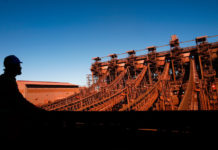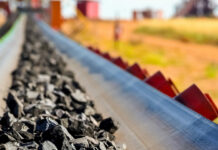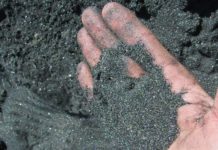
[miningmx.com] –THE Xstrata/Merafe chrome joint venture is to invest nearly R1 billion in a new pelletising and sintering plant which will be built at the group’s Rustenburg ferrochrome plant.
Merafe’s 20.5% share of the cost will amount to R190m. The new plant is expected to be fully operational by 2013, according to Merafe CEO Stuart Elliot who said it would be funded from current and future cash flows.
The new plant – named Tswelopele – follows the successful construction of a similar plant called Bokamoso that was commissioned at the Wonderkop smelter in 2007.
Tswelopele will take chrome ore fines which cannot be fed into a ferrochrome smelter and convert them into pellets which can be smelted.
Elliot said the pelletising plant would result in a “slight’ increase in ferrochrome production capacity, but pointed out that the JV was not increasing its smelting capacity at this stage.
Elliot took over as CEO from Steve Phiri at the end of March, when Phiri was appointed CEO of Royal Bafokeng Platinum.
On March 2 – when Phiri presented Merafe’s results for financial 2009 – he commented there would be no new ferrochrome smelting capacity built in South Africa for the next three years, mainly because of the power shortage.
Elliot on Tuesday commented that the JV had to be satisfied on three issues before it committed to further ferrochrome smelting expansions.
These were a consistent electricity supply from power utility Eskom, a favourable and sustainable outlook on ferrochrome prices and sustainable, attractive profit margins.
Elliot put up a graphic showing that Merafe’s earnings before interest, tax, depreciation and amortisation (Ebitda) had swung over the past four years from a high of 58% in the boom times to a low of minus 5% at the bottom of the cycle.
He described the 27% Ebitda margin achieved in the first six months of 2010 as “attractive to us’.
Elliot said Merafe was still operating on a reduced power supply, equivalent to 90% of what it received from Eskom before the 2008 crisis.
“That is an average over the course of the year, which means we can draw more power in the summer months when we produce more ferrochrome than in the winter months when we cut back on production,’ he said.
The Venture typically cut back on ferrochrome production during the winter months because it carried out maintenance work during this period, when Eskom doubled its power tariffs.
Asked for his view on Eskom’s ability to supply power over the next few years and how this might affect expansion plans, Elliot replied: “The Eskom situation is tight and we are adopting a wait and see attitude.’
The bulk of the world’s ferrochrome production is used in the production of stainless steel. Elliot said he expected stainless steel production to drop in the third quarter of 2010, but then recover during the fourth quarter and through into 2011.
He forecast demand for ferrochrome would show the same trend because of conditions in the stainless steel market, and also because of “the lack of any new ferrochrome capacity coming on stream in the immediate future’.
South Africa dominates the ferrochrome business, accounting for around 40% of total supply.
Elliot said discussions with the South African government on limiting chrome ore export volumes were continuing.
He sid: “There’s a contradiction here in the legislation, which is intended to promote beneficiation of local products inside South Africa but allows chrome ore to flow to China to be processed into ferrochrome there.
“I believe we will eventually reach an appropriate agreement, but it will just take time.’
According to Merafe statistics, Chinese stainless steel production has been rising steadily from 4.2 million tonnes (mt) in the first half of 2009 to 4.9mt in the second half of 2009 and 5.4mt in the first half of 2010.










